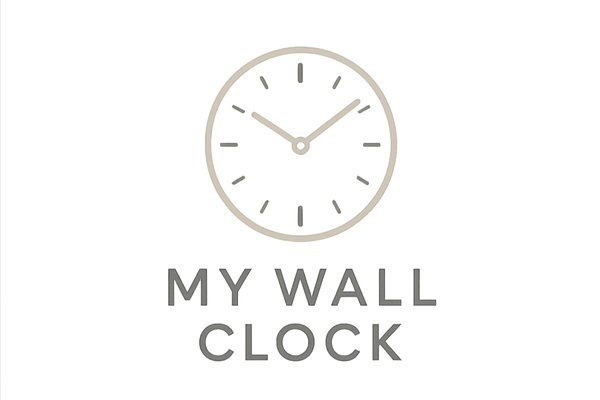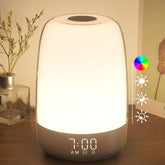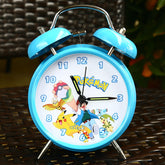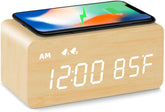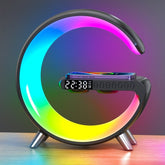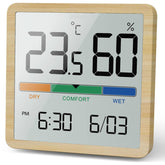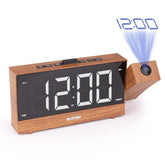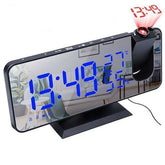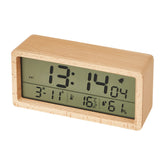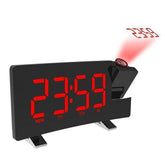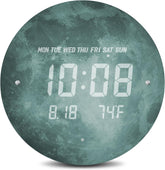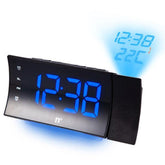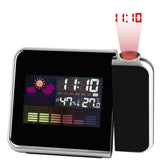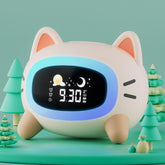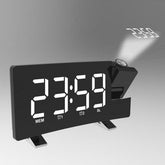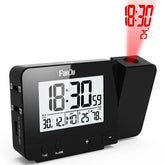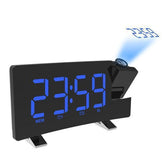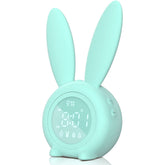How Does a Quartz Clock Work?
The Quartz brought a precision unmatched in the history of time "capture" and display; the quartz movement has caused a revolution in the watch and clock industry. Turning our lives upside down, it was finally possible to have the exact time in our daily lives.
To understand to what extent this quartz movement has revolutionized the world, we will see in this article:
- How a quartz movement works.
- The history of the quartz movement.
- The quartz movement vs. mechanical movement.
1) Operation of a quartz movement
A. Functioning and properties of quartz
The operation of a mechanism using a quartz movement is very simple: Quartz, when electrically stimulated, starts to oscillate at a precise frequency due to its piezoelectric properties. This well-calibrated frequency lasts precisely one second, so watchmakers then quickly use it to design accurate clocks. To achieve this coveted frequency, the Quartz is cut into a lamella and then placed in a tin tube to protect it.
How it works and how it is used in watchmaking also depends on the display mode, digital or analog.
B. Quartz movement and digital display
It is straightforward to operate a clock or watch with a digital display using the properties of Quartz. The power source is the battery, which will send a pulse to the Quartz. This pulse will create vibrations that are transmitted to the chip installed in the mechanism. This chip will then decode all the vibrations received and tell the screen to increment the display by one sound every second and then by one minute every 60 seconds.
C. Quartz movement and analog display
For the analog display, this is a little longer and more complex. As with the digital display, the battery will send a pulse to the Quartz, which will make it vibrate and send it to the chip. The chip, this time, will send an electric pulse to a coil belonging to the stepper motor.
D. The stepper motor
Marius Lavet is the inventor of the stepper motor in 1936, and this motor is made up of :
- a coil
- a stator
- a magnetized rotor
When a magnet is rotated in a cylinder, an electric current is produced. The reverse also works on the same principle, i.e., inducing an electric current in a coil will have an electric current.
The stepper motor works on this principle! First, the rotor is magnetized. We will then introduce an electric current into the coil, which will create a magnetic current in the stator resulting in half a rotation of the rotor. Then an electric current is sent in the opposite direction to reverse the polarity in the stator, which will make the rotor make a full rotation. The movement of the rotor is then transmitted to the gears, which makes the quartz mechanism work.
Bonus: If you mount a stator upside down on a clock or watch, it will run upside down.

2) History and invention of the quartz movement
A. Creators and first objects
Frenchmen invented or instead discovered the piezoelectric effect of Quartz, these two brothers: Pierre and Jacques of the very famous Curie family (world-famous in particular thanks to work carried out by Pierre and his wife Marie Curie on radioactivity).

This piezoelectric effect appears when certain crystals are pressed (in our case, Quartz), it makes electricity circulate inside these crystals. The reverse is also true: if electricity is passed through Quartz, it will vibrate back and forth. The scientific definition of piezoelectricity is as follows:
Piezoelectricity (also called the piezoelectric effect) is the appearance of an electrical potential (a voltage, in other words) on the sides of a crystal when you subject it to mechanical stress (by squeezing it).
In practice, the crystal becomes a tiny battery with a positive charge on one side and a negative charge on the other side; current flows if we connect the two sides to make a circuit. In the inverse piezoelectric effect, a crystal is subjected to mechanical stress (shape deformation) when a voltage is applied to its opposite faces.
B. Mass marketing and use
In 1927 Waren Marrison and J.W. Horton of Bell Laboratories presented the first clock that worked with a quartz movement: the Crystal clock.
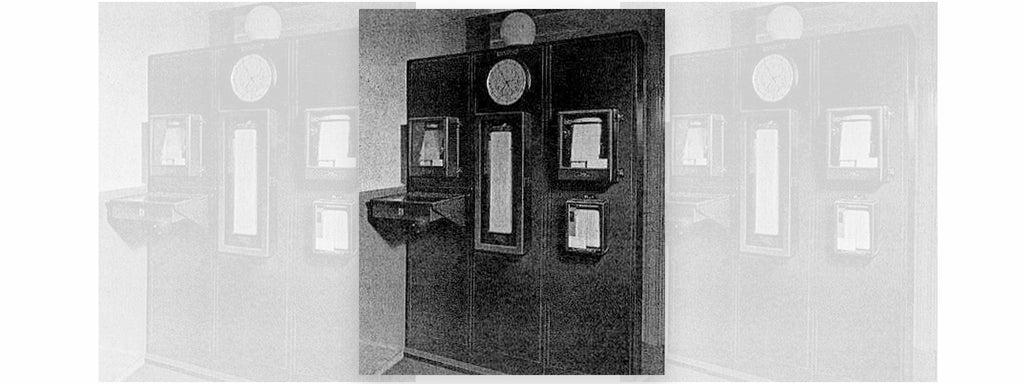
With the size of a cabinet, this first quartz clock worked using the oscillation of the Quartz caused by piezoelectricity; this electrical oscillation creates a supremely accurate signal keeping the same frequency. This makes it possible to count the seconds and thus to develop exact clocks and watches.
The first watch working with this quartz mechanism was built in 1927 by Seiko in December 1969. Due to its simplicity of creation, precision, and low cost, the quartz movement quickly became the most widely used element in watches and clocks. As a result, almost all of our wall clocks work with a quartz movement. Although this first watch was costly when it came out, having such a precise watch was a sign of great wealth.
C. Other objects using quartz
There are nowadays countless everyday objects using quartz movement. At first, all things used as timekeepers: clocks, wristwatches, even some clocks with pendulum clocks use a quartz movement to keep the aesthetics of the clock while optimizing the reliability of the time display. The chronograph also uses a quartz movement. Because of its piezoelectric effect and low cost, Quartz is widely used to make oscillators. Many other objects are made with this mineral; the world production of Quartz for electronic purposes amounts to two billion each year.

3) Quartz movement vs. mechanical movement
We all know that a clock keeps and displays time, but have you ever wondered how it does it? Probably the simplest clock you can make is a talking clock. If you count the seconds by repeating a sentence that takes exactly one second to say (like "elephant one," "elephant two," "elephant three"...), you'll see that you can keep time fairly accurately. Give it a try. Say your elephants from one to sixty and see how you keep time for more than a minute, relative to your watch. Not bad, eh? The problem is that most of us have better things to do all day than to say "elephant." That's why we're glad we invented clocks.

A. The mechanical movement
The first clocks used mechanical movements before the appearance of the quartz movement. In the watch industry at that time, most clocks used pendulum clocks to keep time. A pendulum is a long rod or weight on a string that swings back and forth. In 1583, the Italian physicist Galileo Galilei (1564-1642) discovered that a pendulum of a certain length always takes the same time to swing back and forth, regardless of its weight or size.
He realized this by watching a considerable lamp swing on a chain from the ceiling of the cathedral of Pisa in Italy and using his pulse to time its forward and backward movement. In a clock, the function of the pendulum is to adjust the speed of the gears (gear wheels with teeth cut into their edges). The rates count the number of seconds that pass and convert them into minutes and hours, which are displayed on the hands that sweep the dial. In other words: the gears of a clock are just counting elephants.
The open case of a large grandfather clock shows the pendulum swinging inside. You can make a pendulum by attaching a weight to a piece of string. If the line is about 25 cm (10 inches) long, the pendulum swings back and forth about once a second. Shorter strings will oscillate faster, and longer strings will oscillate slower.
B. Limitations of this movement
A clock using mechanical mechanisms such as a pendulum clock is that the continuous pendulum will stop. This is because air resistance and friction will soon exhaust its energy and stop it. That is why pendulums have springs. You wind a spring inside the clock about once a day to store the potential energy needed to keep the pendulum running for the next 24 hours. As the spring unwinds, it powers the gears inside the clock. Then, through a tilting mechanism called the escapement, the pendulum forces the gears to rotate at a precise speed, and this is how the gears keep time. A pocket watch is too small to have a pendulum inside, so it uses a different mechanism. Instead of a pendulum, it has a balance that rotates first in one direction and then in the other, controlled by an escapement much smaller than that of a pendulum.
C. Advantages of the quartz movement
Clocks working with a quartz movement solve all these problems. They are battery-powered, and because they consume so little electricity, the battery can often last several years before you need to replace it. They are also much more accurate than pendulum clocks. Quartz watches work in a very different way than ordinary clocks and watches. They still have gears inside them to count the seconds, minutes, and hours and sweep the hands around the clock face. But the gears are regulated by a tiny quartz crystal instead of an oscillating pendulum or a moving balance. Gravity isn't in the gears at all, so a quartz clock tells time both when you're climbing Everest and when you're at sea.

